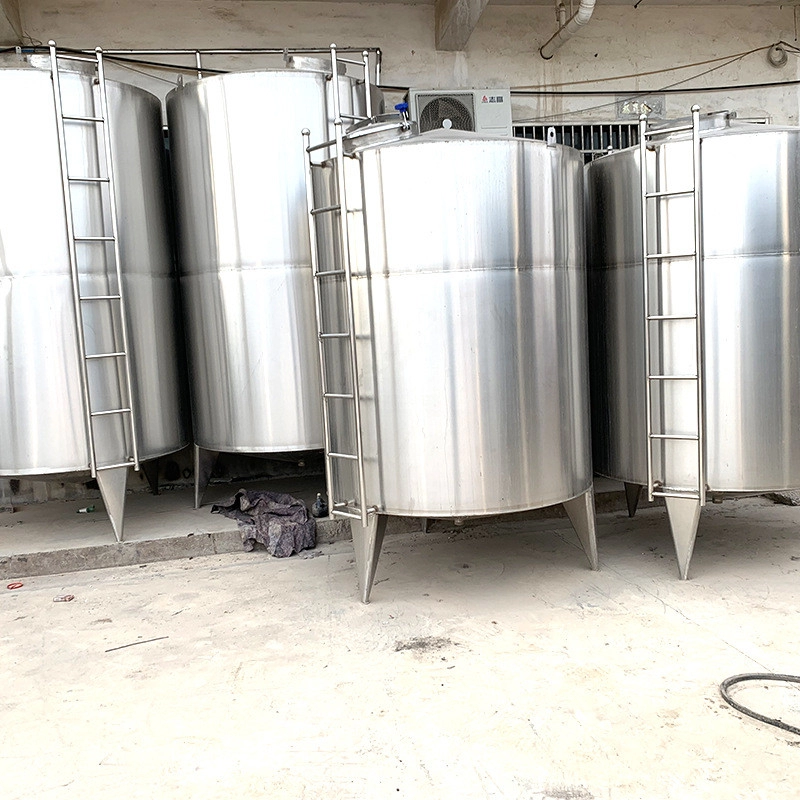Discover proven strategies to extend the lifespan of your industrial storage systems and avoid costly corrosion damage
Stainless steel storage tanks are essential across industries from chemicals to food processing. They’re known for durability, but corrosion can still occur. In fact, a NACE International study estimates corrosion costs the global economy $2.5 trillion annually. That’s roughly 3.4% of global GDP!
Interestingly, many operators assume stainless steel is completely corrosion-proof. Counterintuitively, even high-grade alloys can degrade when exposed to chlorides, acidic solutions, or stagnant water. Our team encountered a stainless steel storage tank in a dairy plant that developed pitting corrosion after just 18 months due to improper cleaning chemicals.
Key Insight: According to the American Petroleum Institute, proper maintenance can extend tank lifespan by 10-15 years. That’s a massive return on investment for implementing these corrosion prevention strategies.
Not all stainless steel is created equal. Choosing the right grade for your specific application is crucial. For example, 304 stainless works for many applications, but if you’re storing chloride solutions, you’ll need 316 or even duplex grades.
I remember a pharmaceutical client who initially used 304 stainless steel storage tanks for bleach solution. Big mistake – they started showing rust spots within months. After switching to 316L tanks, they’ve been corrosion-free for 5+ years.
Design flaws cause many corrosion issues. Avoid crevices where moisture can accumulate and ensure complete drainage. Weld quality matters too – poor welds create sites for crevice corrosion.
However, it’s worth noting that even well-designed tanks need proper installation. We’ve seen excellent stainless steel storage tank systems compromised by contact with carbon steel supports, causing galvanic corrosion.
Regular inspections catch problems early. Establish a schedule for:
Fun fact: In 2025, our team implemented a predictive maintenance program for a chemical plant’s stainless steel storage tanks. Using sensors and AI analysis, they reduced unplanned downtime by 40%.
Control what your tank is exposed to. This includes:
For outdoor tanks, protective coatings or shelters extend lifespan significantly. Interestingly, simply painting support structures can prevent galvanic corrosion.
| Feature | Stainless Steel Storage Tank | Carbon Steel Tank |
|---|---|---|
| Corrosion Resistance | Excellent (especially grades 316/316L) | Poor without coatings |
| Maintenance Requirements | Low to moderate | High (frequent recoating) |
| Lifespan | 25-35+ years | 15-20 years (with maintenance) |
| Initial Cost | Higher | Lower |
| Chemical Compatibility | Broad range | Limited |
Identify stored materials, environmental conditions, and potential corrosion triggers. Document current tank condition with photos.
Choose appropriate stainless steel grade based on chemical compatibility and environmental factors.
Ensure smooth surfaces, proper drainage, and avoid dissimilar metal contact. Consider professional design validation.
Follow manufacturer specifications precisely. Implement cathodic protection if needed. Conduct initial cleanliness verification.
Establish regular inspection, cleaning, and monitoring schedule. Train personnel on proper procedures.
Never: Use abrasive cleaners or steel wool on stainless surfaces – they embed iron particles that rust. Avoid chlorine-based cleaners unless specifically recommended for your application. Don’t ignore small stains – they’re early warning signs. Most importantly, never assume your stainless steel storage tank is maintenance-free.
Q: How long should a stainless steel storage tank last?
A: With proper maintenance and corrosion prevention, quality stainless steel storage tanks can last 30+ years. Grade 316 tanks in chemical service typically last 25-35 years.
Q: Can stainless steel tanks rust?
A: Yes, despite the name. Under certain conditions – exposure to chlorides, acids, or when contaminated with carbon steel particles – stainless can corrode. Proper material selection and maintenance prevent this.
Q: What’s the best way to clean a stainless steel tank?
A: Use non-chlorinated, non-abrasive cleaners specifically formulated for stainless steel. Always rinse thoroughly with clean water. Avoid steel wool or wire brushes that can contaminate the surface.
“Implementing these corrosion prevention strategies extended our tank lifespan beyond expectations. We’ve saved over $200,000 in replacement costs in just three years. The investment in proper stainless steel storage tank maintenance pays for itself many times over.”
– James Wilson, Plant Manager, Chemical Solutions Inc.
